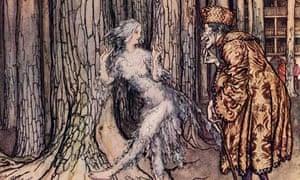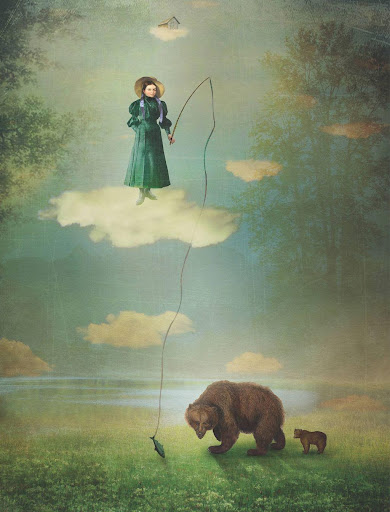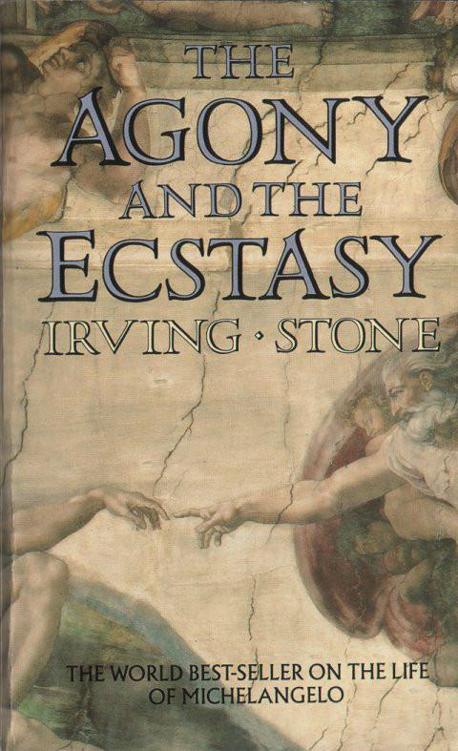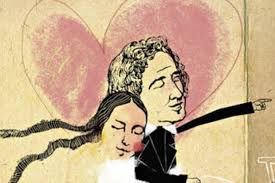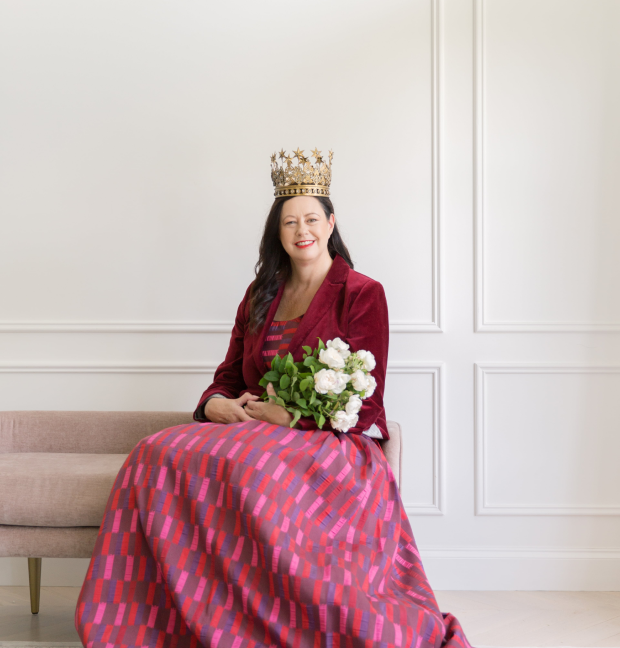I was only a child when I faced death for the first time.
Aged just two years and four months old, I was savaged by my father’s Doberman Pinscher in the back garden of our home in the Artarmon veterinary hospital. Tossed like a rag doll, my ear was torn from my head and the dog’s fangs penetrated straight through the thin bone of my skull and into the brain. My left eye was missed by a fraction of a millimetre.
Somehow my mother managed to wrestle me from the dog’s jaws. She wrapped me in towels and ran for help, my four-year-old sister Belinda running sobbing beside her. A young man driving down the Pacific Highway stopped and picked her up. At North Shore Hospital, when the nurses unwound the bloody towels from around my head, he fainted.
My mother was told to prepare herself. I was unlikely to live.
Somehow they patched me together again. My ear was sewn back on, albeit a little crooked. More than two hundred stitches covered my head and face. I must have looked like a tiny Frankenstein’s monster.
I did not wake up. My temperature climbed higher and higher, and still I lay unwaking, like a cursed princess. No amount of kisses roused me.
Ten days after the accident, I was gripped by relentless fever, uttering constant high cries, red and floppy as a skinned rabbit. Still no-one could wake me. The doctors told my mother I had bacterial meningitis. Think of it as another savage dog, a crazed wolf, pinning me down with its heavy paw. No drugs could release me from its jaws. Prepare yourself, she was told. Few children survive meningitis.
I lay in ice like a glass coffin. I was white and red and black. I had gone away from this world, gone somewhere no-one could reach me.
Days passed and still my fever climbed. My small body convulsed.
It’s worse than meningitis, the doctors said. It’s meningoencephalitis. A wild whirling word, full of holes and spikes. Other words came. Seizures. Toxic. Fatal. I heard none of them.
The doctors wanted to drill a hole in my skull to help drain away the infection sinking its claws into my brain. My mother would not let them. Come back, she said to me. Please come back.
The fever broke. Twenty days after the dog attack, I opened one eye (the other was lost inside a bruised mess of swelling and stitches.) I swallowed some milk. I spoke. A week later I was allowed to go home.
It was not the last time that I would outface death.
The dog’s fang had destroyed my tear duct. From the age of three years to the age of eleven, I was in and out of hospital with acute infections and dangerously high temperatures. I could hear the fever coming, a rattling roaring locomotion rushing upon me. I could feel it in my skin. Whitecaps of flame and frost. My body undulating, shrinking, stretching. Fingers like rainclouds. Whirling embers in my eyes. Mocking demonic faces.
I knew the hideous.
Flashes of memory are all that remain to me.
Sitting with my head under a towel, breathing in boiling steam.
A young doctor piercing the abscess with a needle. Screaming with pain.
The taste of pus.
Counting backwards from ten as I sink beneath the anaesthetic. Again. And again.
Proudly telling the nurse that I was very good at spelling, that I could spell anything! Her response: Spell diarrhoea.
My sister and brother coming to visit me and telling me, in high excitement, that they were on their way to the Sydney Easter Show.
Lying in bed listening for the sound of the ding that meant the lift had arrived. It seemed as if the ding was hardly ever for me.
Some people came to visit me but their little girl had to be taken outside as she would not stop screaming at the sight of me (I was not pretty).
Staring for hours out the one small dirty window. All I could see was a green hill crested with an immense old tree and what looked like a castle. I used to imagine galloping up that green hill on the back of a white horse that would fling out its great wings, leap into the air, and take me away.
The Art Gallery of NSW
Sometimes I would be well enough to get out of bed. I would walk around and around the corridors in my nightie, dragging my drip trolley with me. I’d look in all the doorways at the old, sick people with patches over their eyes. It was an old hospital. At one point the floor sloped downwards. I’d hop on my drip trolley and ride it down the slope. It was the most fun I could have – three seconds of wildness and freedom.
Stories. My only source of sunshine, my only solace. I would read all day and as late into the night as the nurses would let me. I dreaded the light being turned off, I dreaded the empty hours of the night. Once my book was taken away from me, all I could do was lie there in pain, trying to imagine myself back in its pages. Stories were escape. Stories were magic.
Many years later I was to write a poem about my childhood:
Scars
I bear many scars - the ones I show you
the ones I hide.
There are the marks everyone has
small white nicks
celebrating the meeting of elbows
and the asphalt of the playground.
this scar
the boys in class teased me
as they always did. I ran away,
the world distorted with tears
the broken paling in the fence that was my gate
drove splinters into my hand
so I stumbled
the long nail, red with rust,
punctured my knee
tore a hole
where now there is this shiny triangle
of scar.
But that is not the
hieroglyphic
I want to show you.
Anyone might have that.
This was my first,
the tooth-mark of ritual.
I might be named Dog-Slayer,
except the dog almost slew me.
You are lucky, people say,
the scars do not show.
I have to part my hair to show this
silky, uneven ribbon wrapped around my head.
It is thick and white
It divides my scalp like lines in a diagram
of the cerebral cortex.
If elders once drew upon the stone with sharpened stick
driving in the rhythms of their story
each repetition, over decades,
scoring deeper into the rock -
so too do I, tracing the jagged line of
my scars
tell again the story
of my childhood
the ripping apart of times
how my head was held in the jaws of the dog,
the slavering beast of myths,
who wrote these runes upon my scalp.
I do not remember Dog,
who taught me the precarious balance
between worlds.
I do remember a fevered world
pulsing
how the relation between objects is altered -
I am small, I am big
my hand floats a huge octopus
trees growing out of my heart
trees a planet away
sounds roaring, voices never real.
In fever,
time is not divided neatly
but quivers apart
dissolves.
This scar
this dog-emblem
has no power to hurt me with memory
only rarely do I shiver
when I see how faces clench
to see it wind through my hair
the tooth-mark of ritual. [1]
One day, when I was seven, my mother brought me a copy of Grimm’s Fairy Tales. The stories inside were full of wonder and peril and beauty and strangeness. Some made me laugh; others made me yearn to travel far, far away to lands of shadowy forests and towers hidden behind thorns; one or two made me shiver and creep into the sheltering tent of my white hospital blanket. All would come to haunt my imagination.
I read that book so many times the spine broke, pages falling out like white feathers. Of all the tales, it was ‘Rapunzel’ that fascinated me the most. She too was locked away from the world against her will. She too was lonely and afraid. Her tears healed the eyes of the blinded prince, as I so desperately longed to be healed. The uncanny parallels between ‘Rapunzel’ and my own life seemed to have some kind of potent meaning. I told myself: One day I too shall escape. One day I too shall be healed.
In time, of course, I was.
At the age of eleven, I became the first Australian to have a successful implantation of an artificial tear duct. A small glass tube, called a Jones tube, was inserted beside my eye, draining fluids down the back of my throat. It needs to be cleared out twice a day and often gets blocked, meaning more steam baths and more antibiotics. Although it does need to be replaced, meaning another trip to hospital, this happens only every five to ten years, instead of every few months.
So I too escaped my tower, my tears healed.
My fascination with the ‘Rapunzel’ fairy tale – and with its key motifs of the tower, the impossibly long hair, and the healing tears – began in that cold white hospital room. In my novels, the themes of imprisonment and escape, wounding and redemption, appear again and again. Towers are a common motif, as is hair as a symbol of life and renewal (also roses and thorns, blindness and healing, and winged people and creatures).
As I grew up, I used to wonder about the story. Why did the witch lock Rapunzel away? Why didn’t the prince bring Rapunzel a rope? Did she ever find her true parents again? I was troubled by the lacuna in the story, the gaps and holes and tatters. I began to cobble these holes together in my mind, weaving a new cloth of fancy.
At last I knew I had to write my own retelling of ‘Rapunzel’. Not as a children’s book, I thought. ‘Rapunzel’ is a story about sexual desire and obsession and cruelty. It had to be a novel for adults. I also did not want to write it as an otherworldly fantasy. I wanted to capture the charge of terror and despair that young girl must have felt. I wanted to remind readers that women have been locked up for centuries against their wills in this world.
Our world.
So I decided to set Bitter Greens, my Rapunzel retelling, in a real place at a real time. This decision meant I could not use magic to explain all the mysteries in the story – the tower without a door or a stair, the golden fathoms of her hair, the tears that heal the prince’s eyes … my imagination caught fire.
But where and when would I set my story? I began to look at the historical roots of the tale, to find earlier versions of the story that might help me. I discovered that one of the earliest versions of ‘Rapunzel’ was written by a 16th century writer employed as a soldier by the Venetian Republic. Venice! I thought. What a wonderful setting for a Rapunzel tale. All those towers and walled gardens and dark alleyways. I had always wanted to set a novel in Venice, that most fairy-tale-like of cities …
Yet Giambattista Basile’s tale had a different ending. His heroine escapes with the prince and throws three magical acorns over her shoulder that transform into savage animals that first impede and then devour the witch. It was the ending with the healing tears that spoke so powerfully to me. I wanted to know who first told that tale. I had to dig deeper.
That was how I stumbled across the fascinating life story of Charlotte-Rose de Caumont de la Force, the woman who wrote the tale as it is best known. She wrote her story, ‘Persinette’, while locked away in a convent by Louis XIV, the Sun King, after outraging the royal court with her antics, which included dressing up as a dancing bear to gain access to her young lover. I was enchanted by this story. She was my kind of woman! And the more I found out about her, the more I realised what a gift her life was for a novelist. Charlotte-Rose de Caumont de la Force is one of the most fascinating women ever forgotten by history.
Initially I had planned to use her life as a framing device around the main body of the novel, the retelling of the Rapunzel fairy tale. Charlotte-Rose would have none of that, however. She insisted her tale be the primary narrative thread, and her voice would not let me be until I did as I was told.
La Force wrote her fairy tale ‘Persinette’ while locked up within the high walls of the convent. It was published in a collection of other tales in 1697, the same year as Charles Perrault’s ‘Tales from Mother Goose’ and the Baroness d’Aulnoy’s ‘Tales of Fairies’. It sold so well (along with a series of scandalous ‘secret histories’ of famous people) that she was eventually able to buy her way free of the convent and live the life she had always wanted in Paris. The final line of Bitter Greens is:
It was by telling stories that I would save myself.
My quest to discover the first teller of ‘Rapunzel’ led me to undertake a doctorate on the subject, with my novel Bitter Greens written as the creative component, the theoretical being an in-depth examination of the fairy tale. It led me into spending seven years of my life digging deeper and deeper into fascinating fairy tale lore, wandering through wild tangled forests of story. It led me to discovering the hidden history of the Grimm brothers’ fairy tales, and so to another novel. The Wild Girl tells the story of the forbidden romance between Wilhelm Grimm and Dortchen Wild, the young woman who told him many of the world’s most famous tales.
I first read about Wilhelm and Dortchen’s romance in Clever Maids: A Secret History of the Grimm Fairy Tales by Dr Valerie Paradiz, which examines the oral sources of the famous tales. Dortchen Wild grew up next door to the Grimm family in the old medieval town of Cassel, in the kingdom of Hessen-Cassel. She was best friends with Lotte Grimm, the youngest child of the family, and had an intense childhood crush on her friend’s handsome elder brother. She made an extraordinary contribution to the Grimms’ fairy tale collection, telling almost one quarter of the 86 tales collected in the first edition. Then – in the final chapter – Dr Paradiz mentioned briefly that Wilhelm and Dortchen eventually married, after a long betrothal.
As soon as I read about Dortchen and Wilhelm, I knew I had to write a novel about them. I was utterly electrified by the heartbreaking beauty and romance of their love affair and by the stories she told. I never knew that so many of my favourite fairy tales had been told to the Grimm brothers by this one young woman.
Dortchen Wild told Wilhelm Grimm ‘Hansel and Gretel’, ‘The Frog King’, ‘The Elves and the Shoemaker’, ‘Rumpelstiltskin’, ‘Fitcher’s Bird’ (a very gruesome variant of the Bluebeard story), ‘Frau Holle’, and ‘The Wishing Table and the Golden Ass’, about a donkey that spits out gold coins from its behind.
‘Fitcher’s Bird’, illustration by Arthur Rackham
On one extraordinary day – 10 January 1812 – she told Wilhelm three stories back-to-back, while huddling about the stove in her sister’s summerhouse so her father would not know.
The tales she told that day were ‘The Singing Bone’, about a murdered boy whose bones are made into a flute that then sings to accuse his killers; ‘The Six Swans’, about a girl who must sew six shirts from nettles, without uttering a single sound, if she is to save her brothers from being swans; and ‘Sweetheart Roland’ about a girl who escapes from a cruel witch but is then forgotten by her beloved.
On 9 October 1812 – the day before the fairy tale collection was sent to the printers – Dortchen told Wilhelm another two tales. The first was about a good sister who is given the gift of spitting gold coins, while her evil sister who is cursed to spit out snakes and toads. The second was ‘All-Kinds-of-Fur’, a dark and haunting tale about a king who falls in love with his own daughter.
Dortchen was eighteen and Wilhelm just twenty-five. Through the telling and writing down of these beautiful, romantic, and terrifying stories, the two fell passionately in love. However, Dortchen’s father disapproved of the impoverished young scholar and forbade them from seeing each other. He did not want Dortchen to marry, but singled her out as the one to stay and look after him in his old age.
Parental disapproval and poverty were not the only things keeping them apart. Wilhelm and Dortchen lived through the bloody turmoil of the Napoleonic wars, and the years of hardship and famine that followed. The collection was first published in 1812, the same year as Napoleon’s fatal march on Moscow, and it was a critical and financial failure. Dortchen became the poor maiden aunt, looking after her sisters’ children, while Wilhelm and his brothers burnt their furniture for firewood so their hands would not be too cramped for writing.
During this time, Wilhelm began to rewrite the tales, making them simpler, more poetic, more powerful. One of the tales he rewrote was Dortchen’s tale of ‘All-Kinds-of-Fur’. The 1812 version, written down in haste and rushed to the printers, was word-for-word as she had told it, a terrible tale of incestuous desire and cruelty. The heroine escapes from her father-king, only to be captured again, abused, and ultimately married to a king who seemed very like her father; perhaps, it even was.
Wilhelm rewrote it so that much of the cruelty is reduced. Instead of being dressed in a disguise made of the skins of hundreds of flayed animals, the heroine’s cloak is made from only small patches of fur. She is not dragged behind a cart, but lifted gently on to it and taken to safety. The second king does not throw his boot at her head anymore and speaks to her kindly. Most importantly, Wilhelm made it very clear that the second king is not her father. Psychologists call the first account (Dortchen’s oral version) a tale of incest fulfilled, and the second (Wilhelm’s rewritten version) a tale of incest averted.
Hidden in the revised text was a small salute to Dortchen. Wilhelm described the heroine as a ‘Wild deer’, capitalising the W in a subtle reference to Dortchen’s last name.
It is my belief that Wilhelm rewrote this tale as a gift to Dortchen. He knew that it is the stories we tell that shape our lives, just as much as our lives shape the stories we tell.
Eventually Dortchen’s father died, Napoleon was defeated, and the fame of the fairy tale collection grew. Thirteen years after they fell in love, Dortchen and Wilhelm were at last able to marry, and they lived together happily for the rest of their lives.
Dortchen Wild is nothing but a footnote in history, yet her life was full of everything I love in a story. Romance, passion, tragedy, struggle, and, finally, triumph. Most importantly, for me, however, was discovering the hidden history of the fairy tales she told, stories which have haunted me all my life.
Fairy tales endure because their messages - hidden within the metaphoric codes of princes and witches and curses and towers - still speak as strongly and clearly to people today as they ever did. We all have the same dragons in our psyche, as Ursula le Guin once said so powerfully. Our terrors and longings walk through the fairy tale landscape, and through our dreams and nightmares. Fairy tales tell us it is possible to face these fears – the ogres of our darkest imaginings – and triumph over them.
Stories can save us, as I know all too well.
[1] First published in QUADRANT, March 1994, and then in my collection of poetry RADIANCE, Magellan Books, 2004


